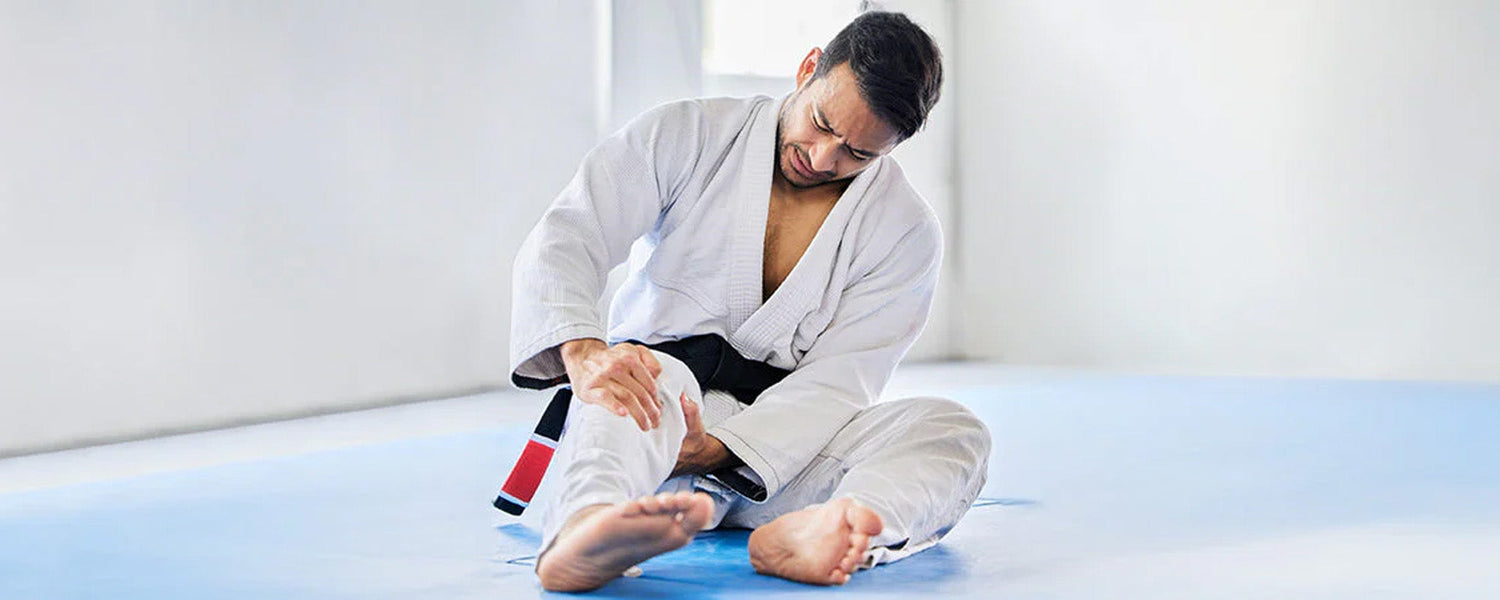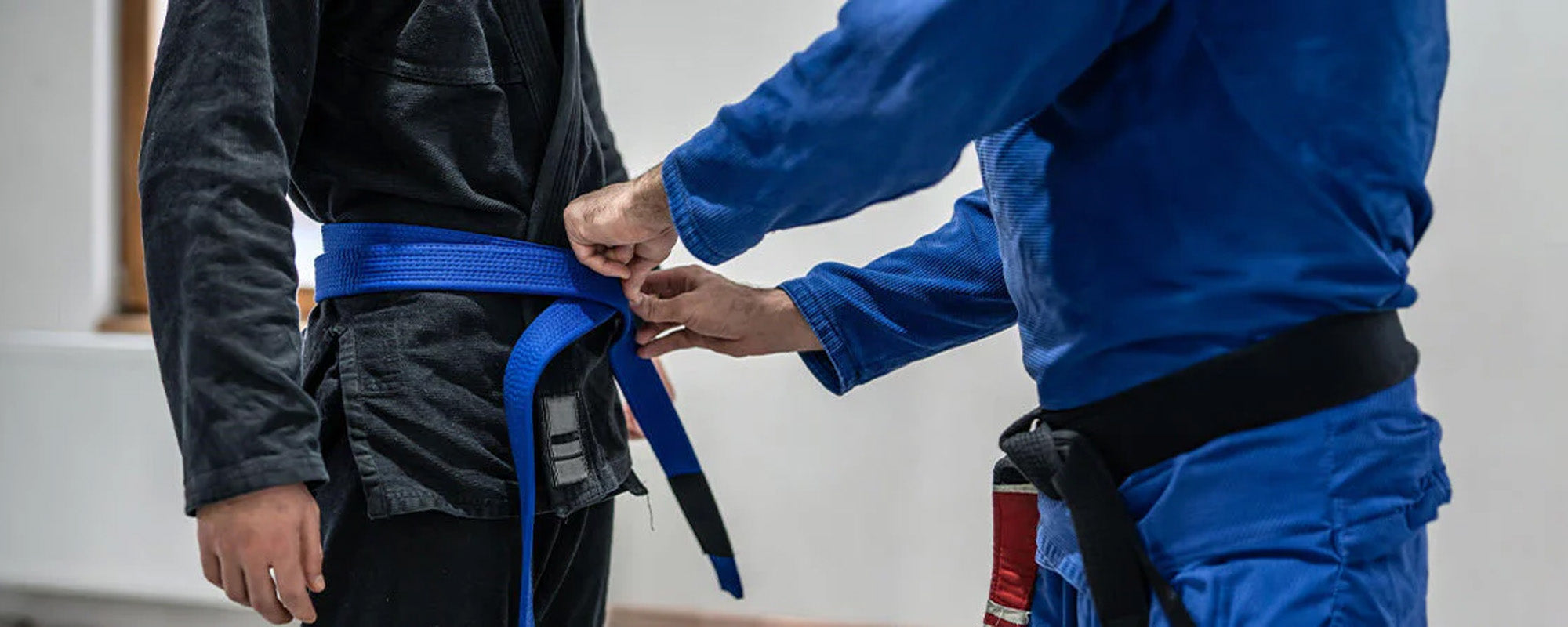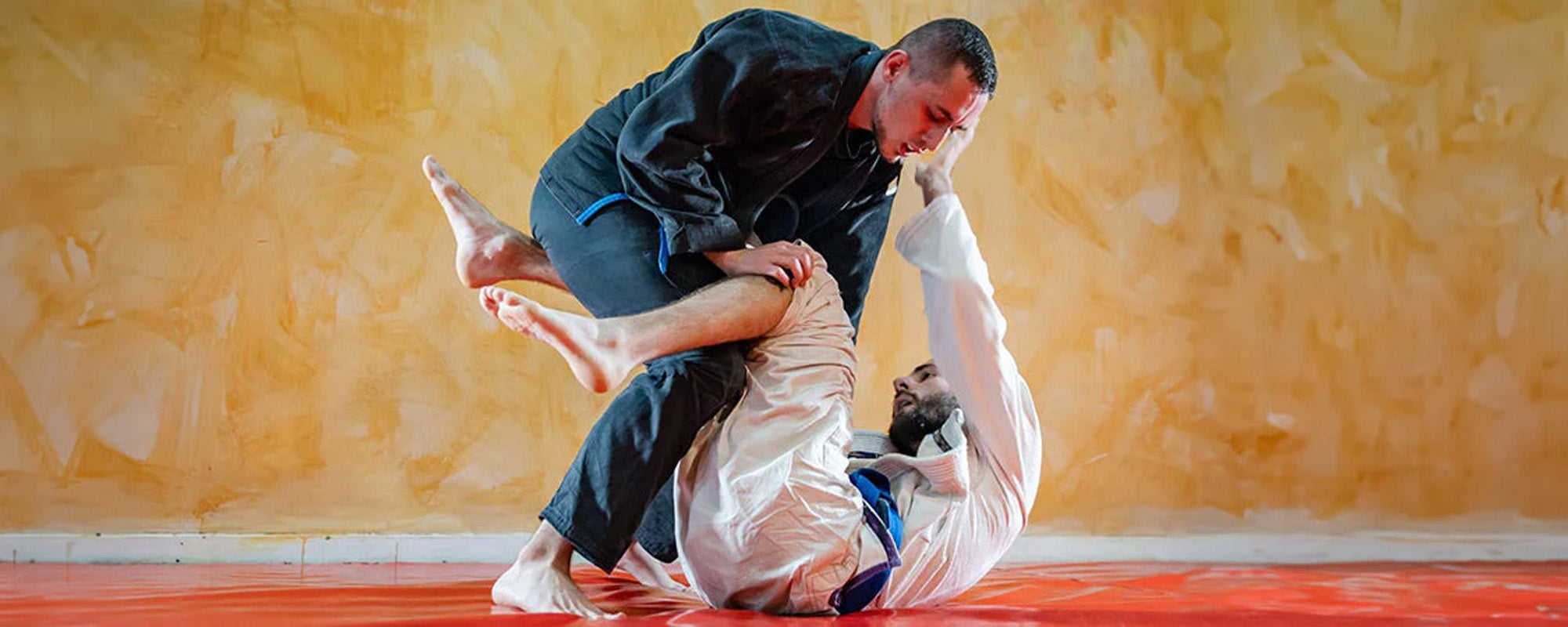Table of content
1. What is BJJ Training?
BJJ training teaches you how to grapple while standing and on the ground. It can help you to improve your movement, balance, and timing. During BJJ training, you learn how to protect yourself on and off the mat and maintain distance from your opponent. Jiu-Jitsu training uses the principles of leverage, angles, pressure, and timing to achieve a non-violent submission of the opponent.
2. Reasons for Muscle Soreness After BJJ Training
Sore muscles are a common occurrence in BJJ, especially among beginners after their first session. BJJ training works all of your major muscle groups. But the muscle groups that suffer soreness or muscle contractions the most are the ones in the neck, back, legs, hips, and wrists. Some common reasons for muscle soreness are listed below:
2.1. Reason One
Muscle soreness can be due to how much and how intensely you train. Highly intense training puts more strain on your muscles, increasing the likelihood of them becoming sore. Because when you place extra load on your body during training tiny micro tears create in your working muscles. Try to do BJJ training at a moderate pace within reasonable amounts of time to avoid soreness.
2.2. Reason Two
If you have just started BJJ training, your muscles, and connective tissue will become broken down due to heavy muscle exertion. This can also occur if you resume training after a long break. Luckily, muscle soreness will usually go away in a few days after your muscles repair themselves and become stronger.
2.3. Reason Three
Muscle soreness can cause muscle injury or fatigue. If you try to train with a muscle injury, you are guaranteed to suffer muscle soreness immediately after or during training. This soreness is not related to muscle growth or repair; this is acute soreness due to muscle injury. Acute soreness is not to be confused with Delayed onset muscle soreness, since DOMS is a byproduct of the muscle healing process, unlike acute soreness.
3. What to Do if You Get Sore Joints After BJJ Training?
How you treat sore joints depends on the cause. Muscle soreness can occur due to weightlifting or forceful or unnatural movements. Before treating sore muscles, you must determine how bad it is and if it could potentially become a more serious injury. It is normal to experience sore joints after constant BJJ training. Rather than quit training if you get sore joints, try to be active to improve blood flow to your muscles and ensure faster recovery.
3.1. Treating Neck Pain After BJJ Training
Neck pain often occurs in BJJ due to fighters trying to keep them straight to avoid getting submitted when pinned on the ground. If you have neck pain, try to determine if it is a muscle injury or a dislocated disc. If you are finding it hard to move your neck, it is likely a muscle injury. But if you feel tingling down your arms and fingers, you likely have a disc. If you have severe neck pain, then you should see a physiotherapist. However, if you suffer minor neck pain, you can reduce discomfort by doing the following:
- Ice Pack: An ice pack can help numb neck pain.
- Movement: Slowly rotate your neck to help facilitate blood flow in your muscles and ensure a speedy recovery.
- Massage: A massage is the best and cheapest way to alleviate neck pain.
3.2. Treating Muscles Pain After BJJ Training
To reduce the risk of neck, back, legs, forearm, and shoulder pain, make sure to do stretches before and after training to relieve tightness in the muscles and drink plenty of water throughout the day to avoid muscle contractions. Listed below are ways to treat muscle pain:
- Stretching: To reduce neck and shoulder pain, perform stretches that involve moving back and forth. This will help reduce muscle tightness and contractions. Stretching is also very helpful in treating back pain after BJJ training.
- Mobilization: To reduce muscle contractions, moving your muscles can help promote blood flow in your muscles, reducing recovery time.
- Massage: Massage can help alleviate pressure and stiffness in the forearm and leg muscles, which allow them to recover faster.
3.3. Delayed Onset Muscle Soreness (DOMS)
Delayed Onset Muscle Soreness (DOMS) is an aching feeling in the muscles caused by extensive training. DOMS can lead to severe body pains. However, post-training DOMS can indicate that your muscles are growing stronger. Within a week, DOMS usually fade away without needing treatment. However, certain exercises can help get rid of DOMS earlier, like massages, rest, and anti-inflammatory medications. But while still suffering DOMS, your performance may become reduced. Staying active while still having DOMS will help reduce the risk of further injury.
4. How to Relieve Muscle Soreness After BJJ Training
Muscle soreness can be reduced by staying active because by being active you are promoting blood flow to the muscles which provides crucial nutrients for speedy recovery. There are certainly other ways to relieve muscle soreness like performing yoga, gentle stretching, muscle massage, and using anti-inflammatory medicines.
4.1. 5 Exercises to Do After BJJ Training:
To avoid muscle soreness and injury, here is a list of exercises to do after training:
- Stretching: Keep your muscles active by doing some stretches after every training session. Stretching will help prevent muscle contractions and stiffness and allow proper blood circulation.
- Jogging: After BJJ training, slow jogging is best since you likely have expended a lot of energy at this point. A relaxed jog will help you reduce slow burn due to anaerobic respiration and lower the risk of soreness, and stiffness.
- Hydration: Keep yourself hydrated before and after training. Dehydration can lead to muscle tightness, contractions, and soreness.
- Strength and Conditioning: You can do strength and conditioning exercises post-workout. Do low-intensity strength training, use your body weight or free weights to help restore circulation to the muscles
- Perform Yoga: Yoga can help reduce or prevent lower back pain. Performing yoga can help reduce stiffness and soreness and improve lumbar spine flexibility.
4.2. Anti-Inflammatory Medication to Relieve Sore Muscles
You can also use pain relief or anti-inflammatory medicines to alleviate pain. You can use nonsteroidal anti-inflammatory drugs (NSAID) to help ease the discomfort. But if used only for an adequate period, it can impact the muscle’s ability to repair itself.
4.3. Yoga Poses to Cure Back Pain
Yoga can help improve flexibility, balance, and endurance. Listed below are some of the best yoga poses to help cure back pain:
- Cobra Pose: The cobra pose stretches your back, which helps improve muscle movement and reduces muscle stiffness. This pose also strengthens your arms and shoulders.
- Cat-Cow Pose: The cat-cow pose improves flexibility in the neck, shoulder, and spine, increases circulation in the back discs, and helps you better maintain balance. It involves shifting your back from a curve to an arch.
- Revolved Triangle: The revolved triangle is the best pose to increase back mobility and reduce back pain. This pose also helps improve concentration, awareness, and balance.
- Pigeon Pose: The pigeon pose works the hips and hamstrings, and helps improve mobility and flexibility in your lower joints.
4.4. Iron Neck Training
Iron neck training involves using an iron neck machine to exert resistance on your body, helping to relieve neck and upper back pain. It is also an efficient way to improve muscle strength and mobility. This type of neck training helps increase muscle strength in the back, neck, and shoulders. The iron neck training works by pulling the nose away from the anchor point, causing the back of the neck to contract. Then, the neck is stretched normally, causing the posterior chain to reach forward with your nose. If you keep doing iron neck training consistently, you will see results within a few days or weeks. Try to do this at least two or three times per week.
5. BJJ Recovery Tips
All BJJ fighters want to quickly recover from muscle injuries to get back to their normal routines. Listed below are tips to help promote recovery:
- Temperature: Higher temperature can help relax your muscles, relieve soreness, and increase the rate of recovery than at room temperature. However, low temperatures below room temperature can also help reduce muscle soreness.
- Treadmill: After BJJ training, the first thing you should do is walk on a treadmill. After a grappling workout, your heart rate will be raised but can be calmed down by spending time on a treadmill.
- Nutrition: Following a nutritious diet will help speed up recovery. Also, make sure to drink a lot of water after every workout to avoid getting dehydrated. Milk and other mineral shakes could also provide your body with vital nutrients.
- Iron Supplements: Minerals like magnesium, phosphorus, and zinc can have a huge effect on your performance. These supplements can help keep your hormones at an optimal level, improving your immune system and recovery time.
6. FAQs
6.1. How common is muscle soreness?
Muscle soreness is a common occurrence in BJJ training, whether you are a beginner or an expert. But you do not have to stop training if you have sore muscles. Muscle soreness will typically go away within a few days if you remain active daily.
6.2. How to be less sore after BJJ Training?
In BJJ, making sure to stay hydrated before and after training will help reduce muscle contractions. Also, do stretches before and after training to help keep your muscles from becoming stiff.
6.3. Is it okay to train with sore muscles?
If you have localized muscle soreness, it should be okay to continue BJJ training. Training while slightly sore can help with recovery and reduce stiffness.
7. Conclusion
Recovering from Jiu-Jitsu can seem tough, but there are multiple ways and practices to get over that. You do not have to worry and stop training if you get muscle soreness, keep training it will go away in a few days or a week. By stretching, hydrating, nutrition, massage, and anti-inflammatory medicine you can easily get away with muscle soreness. Dealing with muscle soreness is as important as doing BJJ training. By following the tips and practices discussed in this article, you can recover from muscle soreness.









Leave a comment
This site is protected by hCaptcha and the hCaptcha Privacy Policy and Terms of Service apply.